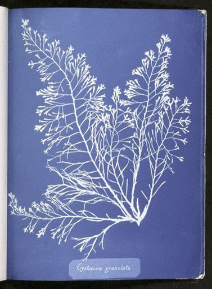Description
This course will explore the technological and aesthetic development of photography in the nineteenth century. Although imaging equipment, such as the camera obscura, had existed for several centuries, the nineteenth century witnessed photographic innovation, invention and production at a tremendous pace. The debate about whether photography was an ‘art’ or ‘science’ was vigorously debated in the period and we will examine nineteenth-century critical writings which grapple to come to terms with the photographic image.
In 1839, the British Royal Academy announced the discovery of a way of obtaining images on paper by the action of light. We will begin the course by examining the ‘beginnings’ of modern photography through the work of Niécphore Niécpe, Louis Daguerre and Henry Fox Talbot. Examining the impact of the daguerrotype (the first kind of mass produced photograph) on nineteenth-century society, we will place photography within the social context of the period by looking at photography’s relationship with journalism, social and political campaigns, travel and tourism and debates about materialism and spiritualism. Photography quickly caught the popular imagination. By 1853, New York alone had eighty six photographic studios. Photographers encountered in the course will include Julia Margaret Cameron, Louis Daguerre, Henry Fox Talbot, Clementina Hawarden, Henry Peach Robinson and Alfred Steiglitz.
Preliminary Reading
Two key preliminary texts (which you might like to buy) and which I strongly recommend that you have a look at over the summer vacation are:
Steve Edwards, Photography: A Very Short Introduction (Oxford: Oxford University Press, 2006)
This is available very cheaply to buy, especially from online stores. I strongly recommend that you purchase this, stick it in your beach bag/ backpack/ handbag as it’s very small in size and you’ll whizz through it in no time at all. It’s a really useful introduction to some of the major themes, critical questions and ideas that we will be considering regarding photography during the course.
Mary Warner Marien, Photography: A Cultural History (London: Laurence King, 2002) – especially chapters one and two.
This book is incredibly useful and is very well organised. For such a large and indispensible text, it’s available quite cheaply (around £20). If you want to splash out, I really recommend this book.
Some other recommendations if you want to get ahead with learning about photography in the nineteenth century:
Peter Hamilton and Roger Hargreaves, The Beautiful and the Damned: The Creation of Identity in Nineteenth-Century Photography (London: National Portrait Gallery, 2001)
Mark Haworth-Booth, Photography, an independent art: photographs from the Victoria and Albert Museum 1839-1996 (London: V& A publications)
John Falconer and Louise Hide, Points of View: capturing the 19th century in photographs (London: The British Library, 2009)
Fancy starting to get your head round some photographic theory and criticism? Have a look at:
Roland Barthes, Camera Lucida: Refelctions on Photography, trans. Richard Howard (New York: Hill and Wang, 1981)
Susan Sontag, On Photography (New York: Farrar, Straus and Giroux, 1973)
Liz Wells, ed. Photography: A Critical Introduction (London: Routledge, 2004)
Have a look at these websites of prominent photographic collections and start building up your own image archive over the summer:
www.nationalmediamuseum.org.uk www.geh.org www.metmuseum.org/about-the-museum/museum-departments/curatorial-departments/photographs

